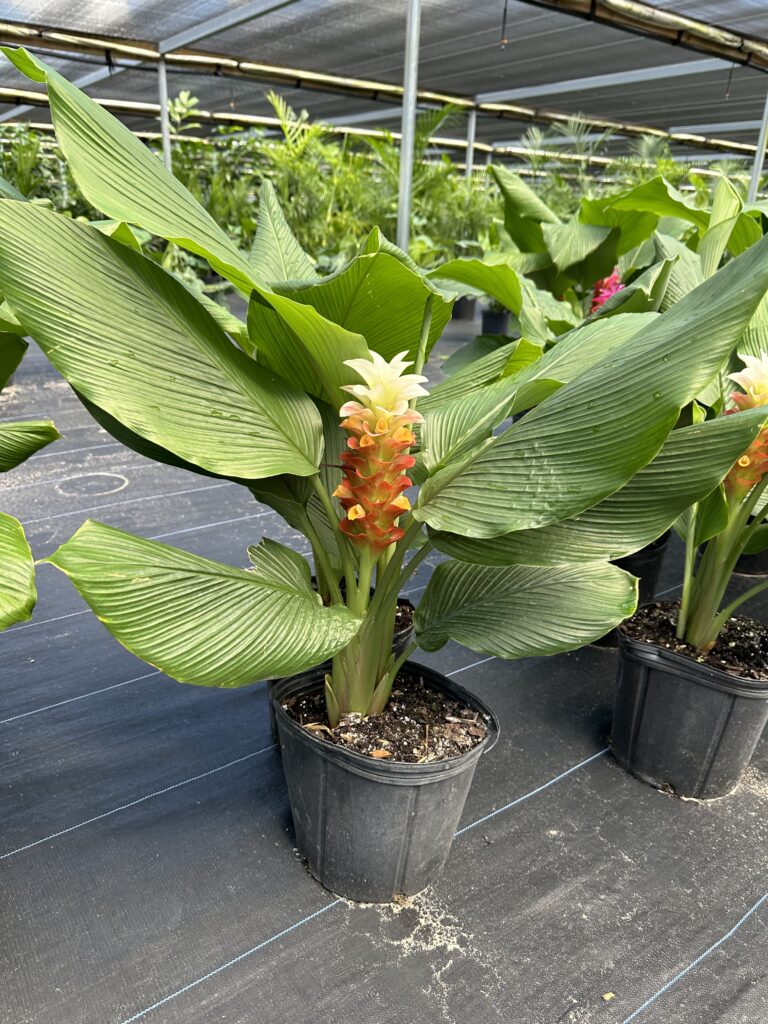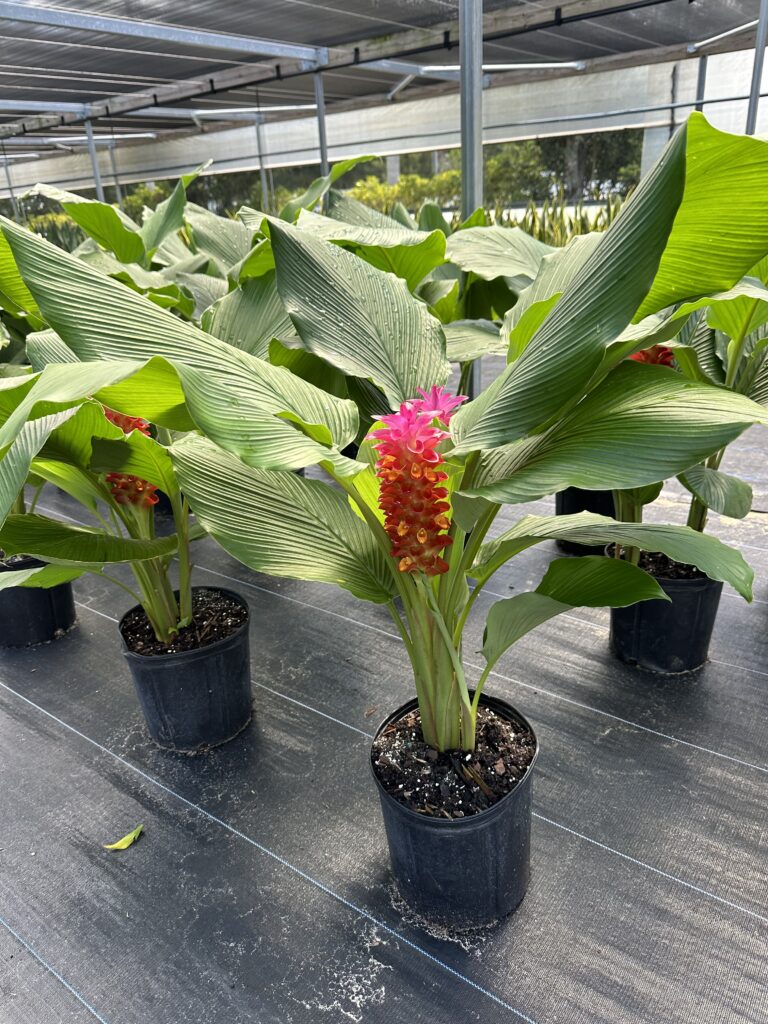

Curcuma plants belong to a genus of plants in the ginger family, Zingiberaceae, known for its vibrant and aromatic rhizomes.
Key Details About Curcuma Plants
- Appearance: Curcuma plants typically have large, broad leaves that arise directly from the rhizome. The leaves can be green or variegated, depending on the species.
- Flowers: One of the most distinctive features of Curcuma plants is their flowers. The inflorescence emerges from the center of the plant and consists of bracts that are often brightly colored, resembling petals. The actual flowers are small and inconspicuous, usually nestled within these bracts.
- Rhizomes: The rhizomes of Curcuma plants are the part most commonly used. They are thick, knobby underground stems that store nutrients and water. The rhizomes have a tough brown skin and a bright orange or yellow interior.
- Cultural Significance: Curcuma longa, commonly known as turmeric, is the most well-known species in this genus. It has been used for centuries in traditional medicine and cooking, particularly in South Asia, where it is an essential spice in curry dishes. Turmeric is also prized for its purported health benefits, including anti-inflammatory and antioxidant properties.
- Growing Conditions: Curcuma plants thrive in tropical and subtropical climates. They prefer well-draining soil, ample moisture, and partial shade. In colder climates, they can be grown indoors as houseplants or in greenhouses.
- Propagation: These plants are typically propagated from rhizome divisions rather than seeds. The rhizomes can be divided during the dormant season and replanted to produce new plants.
- Uses: Beyond culinary uses, Curcuma plants are also cultivated as ornamentals due to their striking flowers and foliage. They are popular in tropical gardens and as indoor plants in regions where they cannot be grown outdoors year-round.
Managing Pests
Pest control for Curcuma plants primarily focuses on preventing and managing common pests that can affect their growth and health. Here are some key pests that may target Curcuma plants and methods for controlling them:
- Spider Mites: These tiny pests can be a problem, especially in dry conditions. They typically appear as tiny specks on the undersides of leaves and create fine webbing. To control spider mites:
- Increase humidity around the plants by misting them regularly.
- Rinse the foliage with a strong stream of water to dislodge the mites.
- Use insecticidal soap or neem oil, applied according to instructions, to reduce mite populations.
- Aphids: Aphids are small, soft-bodied insects that can cluster on new growth and undersides of leaves, sucking sap from the plant. They can be controlled by:
- Washing plants with a strong stream of water to physically remove aphids.
- Introducing natural predators like ladybugs or lacewings.
- Using insecticidal soap or neem oil if the infestation is severe.
- Scale Insects: These insects appear as small, round or oval bumps on stems and leaves, often with a waxy coating. They feed on plant sap and can weaken the plant over time. To control scale insects:
- Use a soft brush or cloth dipped in rubbing alcohol to manually remove the scales.
- Apply insecticidal soap or neem oil, ensuring thorough coverage of affected areas.
- Prune heavily infested parts of the plant if necessary.
- Fungal Diseases: Curcuma plants can be susceptible to fungal diseases such as leaf spot and root rot, especially in humid conditions or when overwatered. To prevent fungal issues:
- Ensure good air circulation around plants.
- Water plants at the base and avoid wetting foliage excessively.
- Remove and dispose of infected plant parts promptly to prevent spread.
- Apply fungicides as a preventive measure or to control outbreaks, following label instructions carefully.
- Caterpillars and Beetles: Some species of caterpillars and beetles may feed on Curcuma leaves and flowers. Hand-picking larger caterpillars is effective, while beetles can be controlled with insecticidal soap or neem oil.
- Snails and Slugs: These pests can damage Curcuma foliage, especially in damp conditions. To control them:
- Remove hiding places such as mulch or debris where they may hide during the day.
- Use barriers such as copper tape around pots or garden beds.
- Apply snail and slug baits sparingly and according to label directions.
- Companion Planting: Some plants like marigolds, garlic, and chives can repel certain pests that might affect Curcuma plants. Consider planting these as companions to help deter pests naturally.
Regular monitoring of Curcuma plants for signs of pests and diseases is essential for early intervention. Integrated pest management (IPM) practices, which combine cultural, physical, biological, and chemical control methods, can help maintain healthy plants without relying heavily on pesticides. Always read and follow label instructions when using any pest control products to ensure their effectiveness and minimize harm to the environment.
Overall, Curcuma plants are valued for their ornamental beauty, culinary importance, and medicinal properties, making them versatile and significant in various cultures around the world.
If you have any questions, are interested in seeing more of our inventory, or would like to order Curcuma plants, call us at (352)735-8350.
